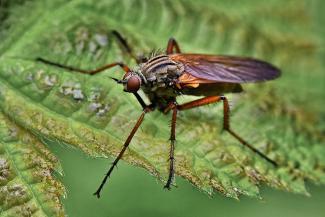
Image Credit: Dave Price
Dance-flies & biting midges (Empididae, Ceratopogonidae) – aquatic detritivores. Behavior of these gnats is similar to that of the Sciaridae. They are abundant, especially during the spring season, but they are of doubtful utility as pollinators. Under conditions of pollinator limitation, they may be significant pollinators (i.e., postulated for Jacob’s ladder (Polemonium) and forest-floor species). For the no-see-ums, the flower may be simply a means to attract other flower-visitors that will serve as blood sources. At the Andrews Forest, I have frequently observed the biting midges feeding on the secreted blood of agitated blister-beetles.





The tiny dance-flies (top row) and the biting-midges (bottom row) are generally overlooked as potential pollinators, even though they may be abundant, especially in moist habitats. Some dance-flies have long tongues which allow them to access nectar from many types of flowers. They are very dainty “higher flies” characterized by tiny antennae. Biting midges are generally EXTREMELY small (the miner’s-lettuce (Montia) flower in the center panel is about 2 mm wide). Highly magnified on the left, a no-see-um displays its fancy antennae; no-see-ums resemble diminutive mosquitoes. On the bottom right, a no-see-um is sucking blood from the antenna of the bumblebee-parasite, Meloe.